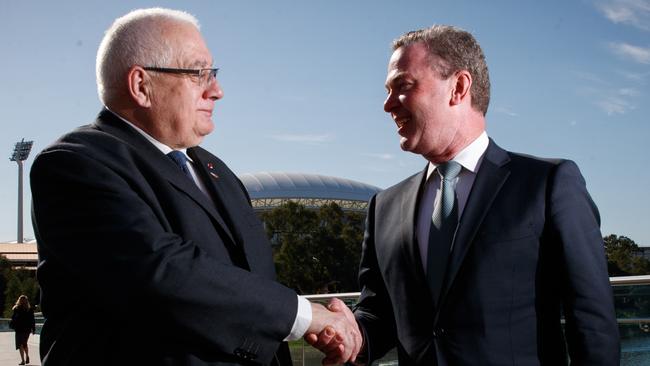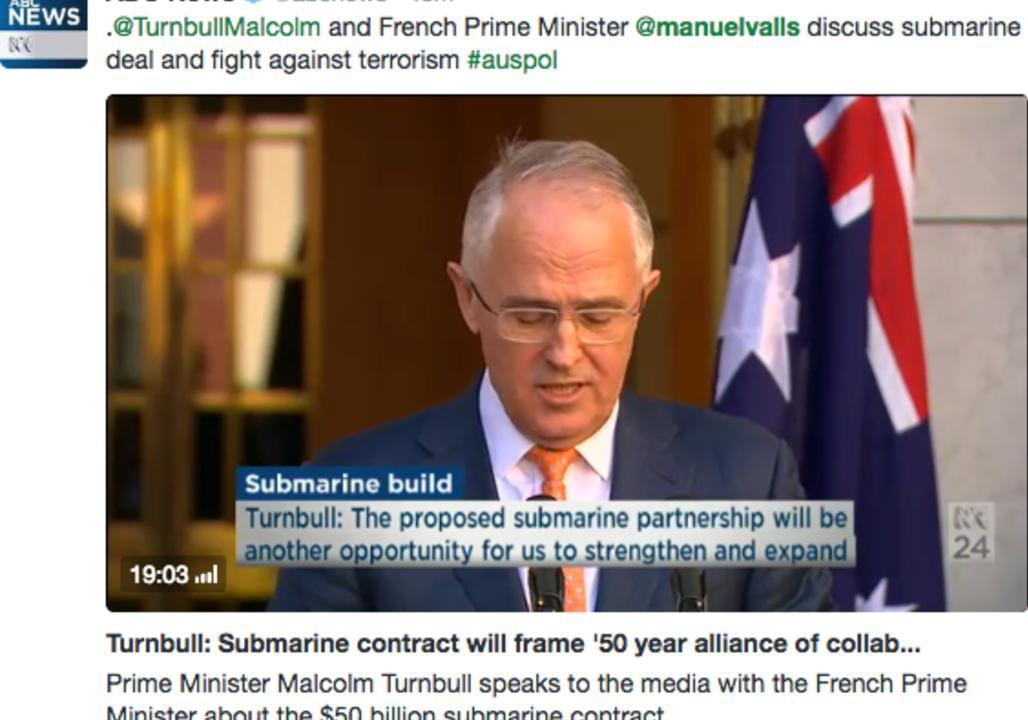Work to start on major upgrade of Osborne’s ASC naval shipyard in Adelaide
WORK will start within weeks on a major upgrade of Adelaide’s naval shipyard, which is being praised as “high-level” by France’s most powerful defence industry chief.
- How will Australia’s submarines stack up?
- How the French Barracuda differs from the Collins Class sub
- Shortfin submarines will be Australia’s most potent weapon
WORK will start within weeks on a major upgrade of Adelaide’s naval shipyard, which is being praised as “high-level” by France’s most powerful defence industry chief.
Defence Industry Minister Christopher Pyne said the first sods would be turned in July on an expansion of the southern end of ASC’s Osborne shipyard, in preparation for construction of offshore patrol vessels from next year and frigates from 2020.
Speaking after showing the naval shipyard to French defence procurement agency chief Laurent Collet-Billon, Mr Pyne also moved to defuse speculation about maintenance and sustainment shifting from Adelaide to Perth as part of the $50 billion project to build 12 submarines, starting in the mid-2020s.
Majority state-owned French firm DCNS secured the future submarine project contract in April last year.
“In terms of full-cycle docking, maintenance and sustainment, Osborne and Henderson both undertake sustainment of the (existing Collins Class) submarines and full-cycle docking is done at Osborne,” Mr Pyne said
“There are no plans to change that mix but obviously it’s a live plan. The submarines will begin in the early 2020s, the future frigates will have begun in 2020.
“...There are no plans to change the current mix of sustainment and maintenance between Osborne and Henderson.”
General Collet-Billon, the chief executive of France’s Delegation Generale pour l’Armament (DGA), said the Osborne shipyard was “very high-level” and “totally fit for Collins sustainment”.
“The actual standard is at a high level,” he said, speaking through an interpreter.

“We have obviously to modify the actual facilities in order to be able to run this high-level program, the future submarine program.
“We have some plans and we have to take decisions very, very shortly to be able (to implement them).”
Asked about the level of Australian involvement in the future submarine project, along with transfer of skills and technology, General Collet-Billon said France was committed to building all the ships here and ensuring Australia had the long-term sovereign capability to sustain them.
He said France was interested in developing a technological partnership with Australia, revealing one had already started in acoustic research.
“We want to propose and develop some other partnerships,” General Collet-Billon said.
“We want to go about partnership with Australia — an operational one, a technical one, an industry one — which makes sense for Australia and France, given the presence of France in the region.”
Alarm about lack of Australian industry participation targets in the future submarine project contract was raised last month by Senator Nick Xenophon, who demanded Mr Pyne ensure the Federal Government was not left legally impotent when trying to maximise domestic business involvement.
Senator Xenophon also questioned why a South Australian company had been given a $1.9 million federal grant to expand to manufacture Collins Class submarine periscopes, yet the work had subsequently been awarded to multinational BAE Systems.

